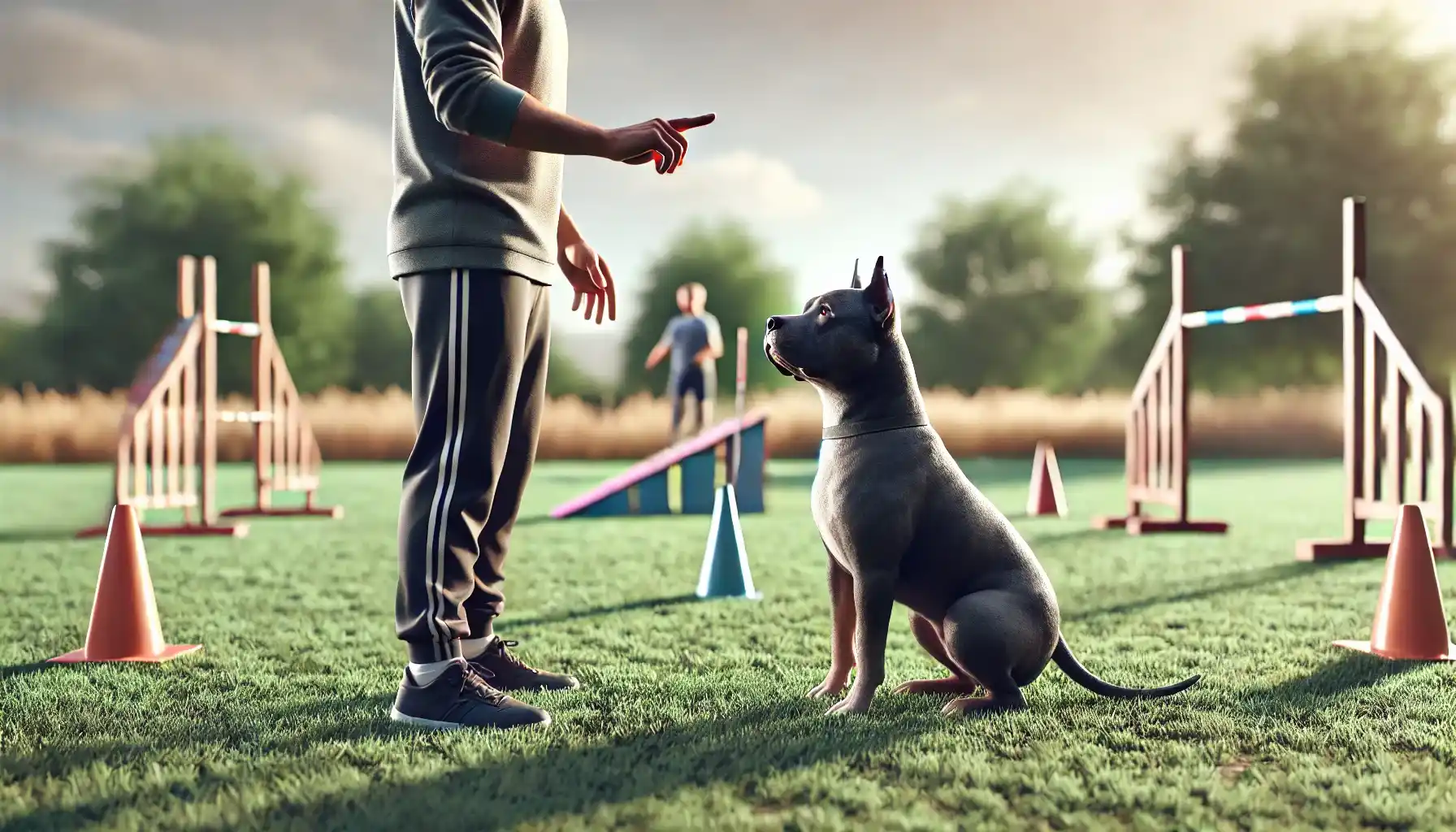Dog owners know that walking with their little (or not really little) ones can be both exciting and challenging at the same time. Anyway, it is the demand that we cannot neglect, for it is the only way for your dogs, especially the bigger breeds like pit bulls, to enjoy fresh air and exercise.
Indeed, the walk outside can quickly turn into a stressful situation. The streets are full of hidden dangers, and it is the owner’s responsibility to protect the dog and ensure that every stroll is as safe as possible. So, what are the main risks pit bulls face on walks, and how to address these issues on time?

The Risks Pit Bulls Face Outdoors
Picking Up Hazardous Objects
Pit Bulls, like many dogs, might have a desire to pick objects up from the ground. While this behavior can be harmless, like fetching a coin or a stick, it can also be dangerous. Should your companion encounter the coin, e.g., the 1889 silver dollar, you can be in the black. Go check the 1889 silver dollar value and praise your furry friend for such a find.
BUT any dog might come across poisonous materials or sharp objects, which could cause severe health problems. These may include broken glass, toxins, poisonous food, and even discarded pharmaceuticals.
Encounters with Aggressive or Unleashed Dogs
When walking any dog, one of the most common dangers is running into other dogs, particularly if they are restless or off-leash. Pit bulls may draw unwelcome attention from other pets, which may cause your pet to get hurt or even worse. Hence, it is critical to stay conscious of your surroundings and be ready to step in if needed.
Traffic and Environmental Hazards
The dangers of crowded roadways, parking lots, and fast-moving cars are common in urban and suburban areas. A loud engine or a moving car can startle even the best-behaved dog. In the worst situation, such an accident can result in fatalities or major injuries.
Unpredictable People
Despite the fact that most people are nice to dogs, strangers may unintentionally excite or frighten your pit bull. Some people might come too close to your dog or, worse, try to hurt them. Not everyone understands animal body language, and because of their reputation, pit bulls might occasionally be viewed as menacing when they are only being playful or inquisitive.
If your dog sees a stranger as a threat, they may also become agitated or hostile. So be mindful, train your dog, and avoid strangers when possible.

Key Safety Tips for Walking Your Pit Bull
We want to keep our pets safe. To do so, follow simple yet crucial rules and make sure your pit bull is well on a regular basis.
Use a Strong Leash and Proper Harness: A strong, non-retractable leash that allows you to take complete control over your dog's movements should always be used. For unexpected actions, it is advised to wear a well-fitting harness over a collar to avoid choking or slipping out.
Stay Aware of Your Surroundings: Always check the area for possible threats, like unruly dogs, hostile animals, or dangerous items on the ground. Stay aware that your dog may respond unexpectedly if they are startled by loud noises or rapid movements of strangers.
Train Basic Commands for Control: "Leave it", "drop it", "heel", and "stay" are the main commands that can save the life of your pit bull trying to pick up something hazardous or lunge at distractions.
Choose the Right Walking Route and Time: Walk in places that are less crowded and avoid places with substantial dog traffic if your dog is still in training. In hot weather, prefer walking during cooler hours (morning or evening) to prevent overheating and burns from hot pavement.
Know When to End the Walk: If your dog is loathing, panting, or exhibiting signs of exhaustion, stop for a rest or go home. Never make your pit bull go on a walk if they seem upset or ill because walks should be fun.
Signs Your Pit Bull May Be Feeling Uncomfortable
In some situations, even the most socialized and well-trained pit bull may experience anxiety or uneasiness. Let us learn some indicators that your pit bull may be feeling uncomfortable.
Tucked tail or stiff posture – Indicates fear or anxiety.
Excessive panting or drooling – Without exercise, this can signal stress.
Avoiding eye contact or looking away – A sign of discomfort or avoidance.
Yawning or lip licking – Often a stress response.
Raised hackles (hair standing up on the back) – Shows heightened emotions like fear or aggression.
Whining, whimpering, or uncontrolled barking – Indicates nervousness or frustration.
Sudden lethargy or freezing in place – A reaction to stress or fear.
Growling or showing teeth – A clear warning sign of discomfort.
What to Do in an Emergency
Stay calm and act fast to assess the issue. If another dog attacks, avoid pulling your leash suddenly, for this can only escalate aggression. Instead, try to distract the dogs with loud noises, an air horn, or by throwing water. If possible, place a barrier (be it a jacket or your bag) between them, but avoid grabbing collars directly to prevent injuries.
Look for signs of pain, limping, or bleeding if your dog is hurt. Apply basic first aid, keep your dog as motionless as possible, and stop the bleeding with a clean cloth. Look for the closest veterinarian right away if there are severe injuries. In the event of heat exhaustion or poisoning, call an emergency pet hotline or veterinarian immediately. Keep a modest first aid kit with you at all times. That is the rule!
Keep your pit bulls safe during walks. Let this experience be satisfying, not challenging.
